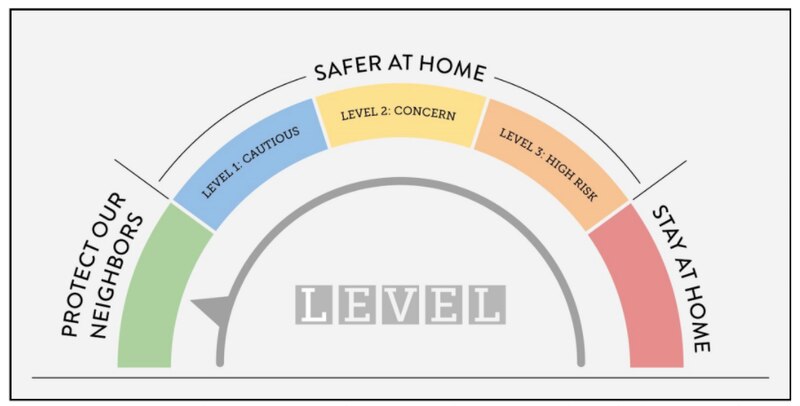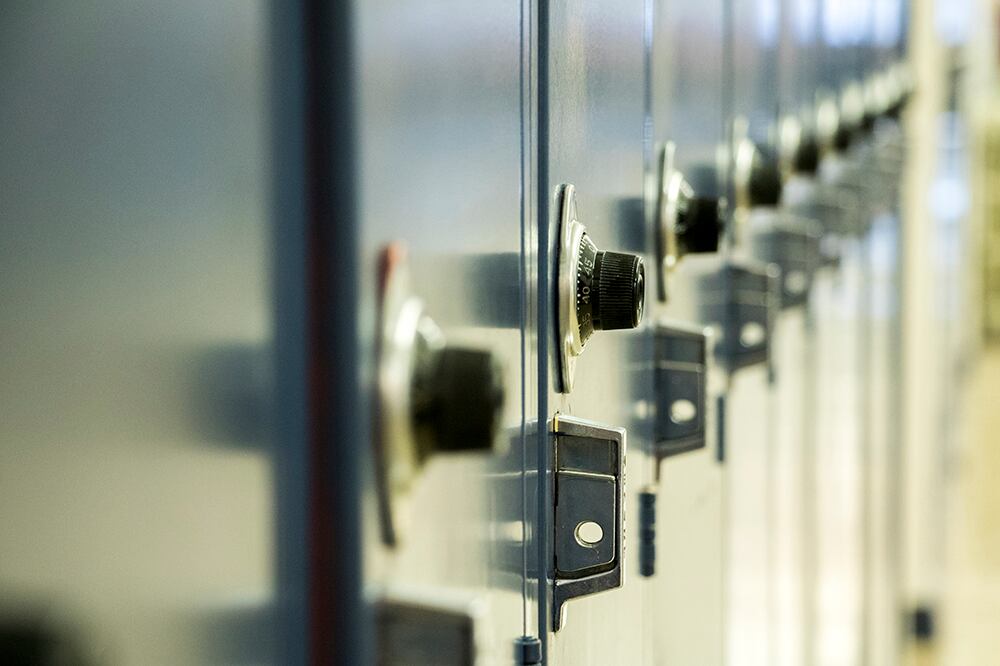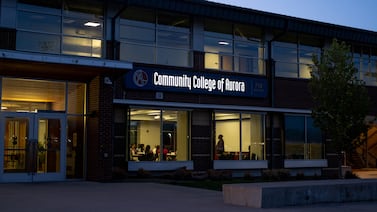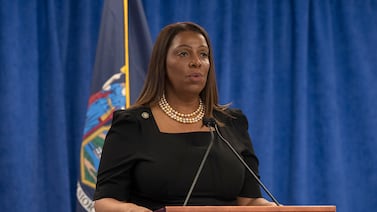As several Colorado counties roll out new restrictions based on higher COVID-19 cases and transmission, schools across the state still have a say in whether to keep their school buildings open.
Here’s how Colorado’s new dial system of restriction levels affect school decisions:
The basics:
The dial system considers three factors when looking at the risk in a county. It considers the number of new cases in a given two-week period and calculates the rate per 100,000 so that this figure is comparable across different-size counties. Then, it looks at the percentage of COVID tests that turn up positive, as well as whether the number of hospitalizations are trending up or down.

These are similar to measures that school districts used in the guides they previously developed on their own.
These three measures then help the state place the county on one of five levels. (The state updates an online dashboard with each county’s current status, here.) The goal is to provide transparency for the public and guidance for decision-makers, and to allow targeted local restrictions. When the measures indicate a decline in a county’s status, the state allows time before requiring the county to impose more restrictions.
Adams County, for instance, created a mitigation plan when its cases started going up and had more than a week to roll it out before the state, seeing the numbers mostly unchanged, decided to move the county as planned to Safer at Home Level 3.
The state made its guidelines mandatory for most industries, but left them as “high-level recommendations” when it comes to schools, allowing room for local control.
“Whether a school is able to support in-person instruction is a local decision that may depend on many more factors other than the level of virus in a community, such as staffing, facility, or student needs,” the framework’s policy document states.
That means different school districts in the same county might be offering different models of learning. In Adams County, the Adams 14 school district is keeping all of its students learning from home, while neighboring Westminster and Mapleton are still in person.
Also, because school districts in some cases cross county boundaries, district officials are working with local public health to get data specific to their district boundaries and to weigh these measures against other factors.
The state’s levels of restrictions are:
Protect Our Neighbors: Careful
This is the least restrictive of the five levels. Three counties in Colorado are currently at this level, and one of them is at risk of moving up on the dial.
What it means for schools: At this level, the state suggests that school districts offer in-person learning.
Safer at Home Level 1: Cautious
This is the second level of restrictions. Arapahoe, Douglas and Larimer counties are here, though rising cases threaten to move the counties to higher restrictive levels.
What it means for schools: At this level, the state suggests in-person learning, but also recommends remote learning or hybrid models “as appropriate.”
Safer at Home Level 2: Concern
The state refers to this level of restrictions as a current baseline. Jeffco, Weld, and Boulder counties are currently at this level.
What it means for schools: At this level, the dial guidelines no longer “suggest” in-person learning, but still allow it, along with a hybrid model and remote learning, “as appropriate.” In this level, guidelines for colleges and universities say those institutions should also use other strategies to increase distancing.
Safer at Home Level 3: High Risk
This is a level with a lot more restrictions for several types of gatherings. For example, group sports must be virtual or outdoors with no more than 10 people. This is the level that Denver and Adams County have moved into this week.
What it means for schools: At this level, the state suggests remote learning or hybrid models, with “limited in-person as appropriate.” This does not mean school districts have to close. Higher education institutions must use “major strategies” to increase distancing between people.
Stay at Home: Severe
This is the most restrictive phase in the dial system, and is similar to the shutdown enforced in the spring where all people were required to stay home except for a few critical activities. Currently no counties are at this level.
What it means for schools: At this level, the state suggests remote learning, but allows for “very limited in-person when necessary.” For higher education, the state suggests remote as well as “significant social distancing strategies.”






